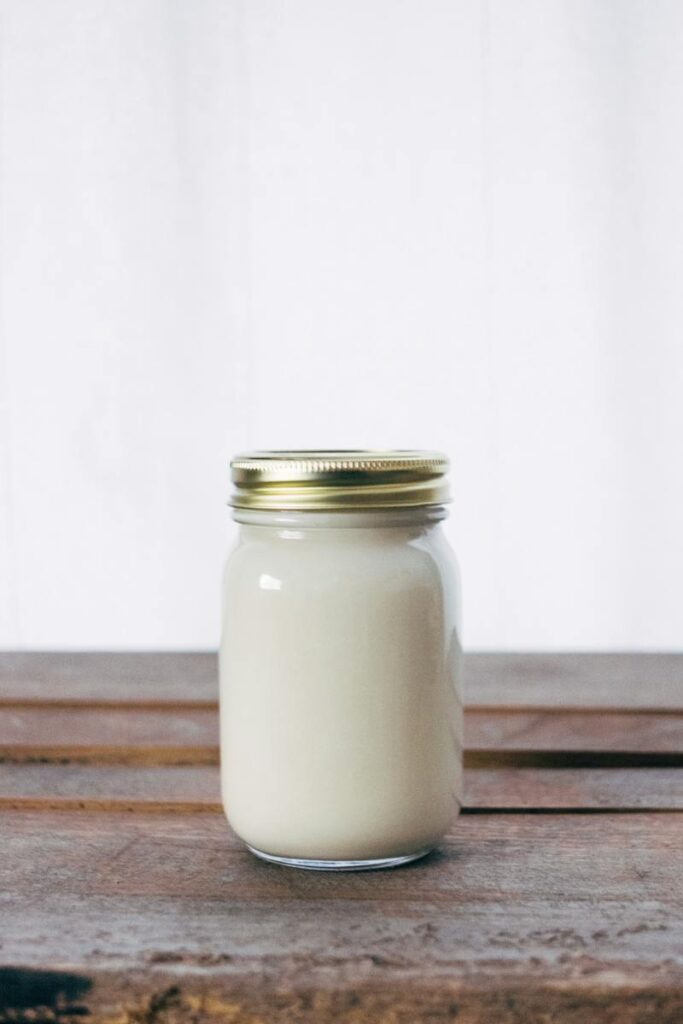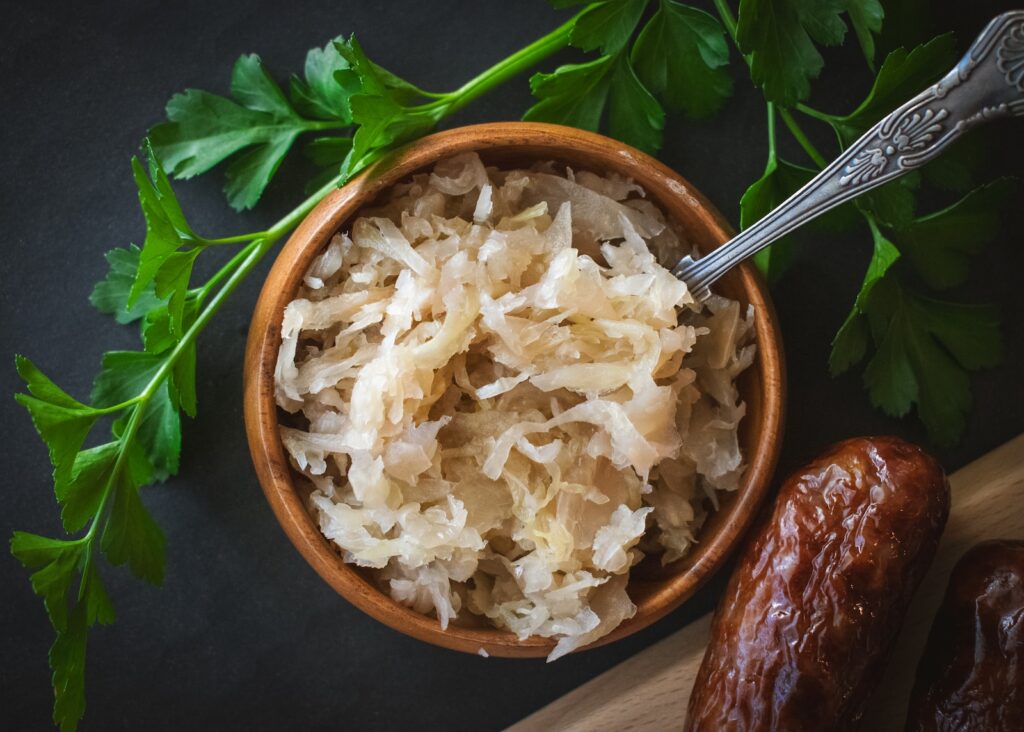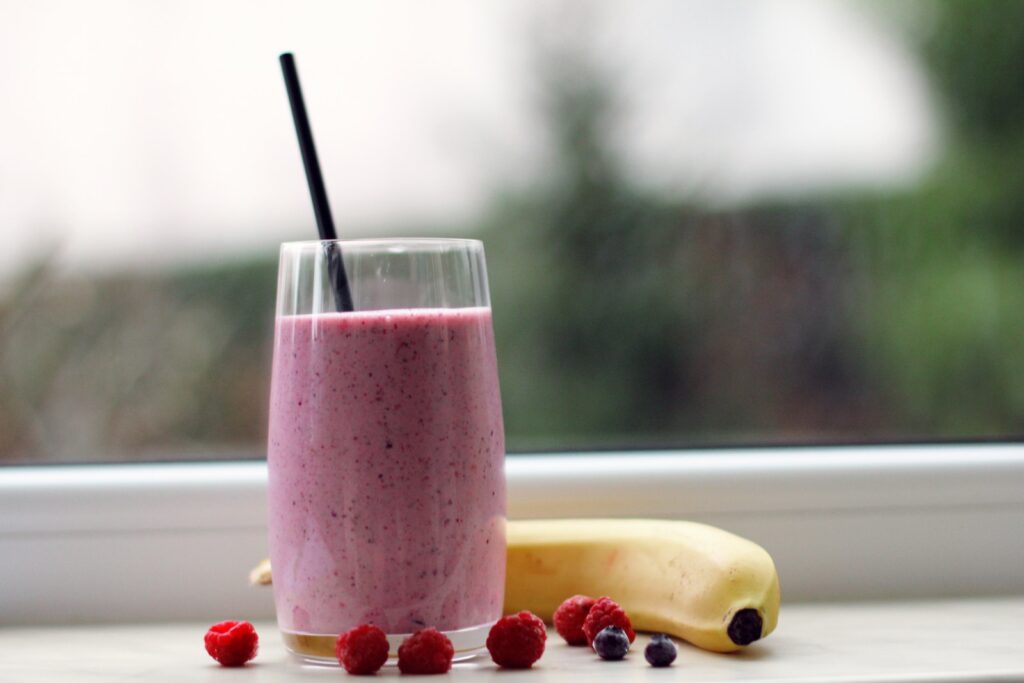
Fermented ingredients are more than just a trend in the beauty world—they’re a game changer for your skin. This article from Stylish dives into the nitty-gritty of how fermentation works and why your skin loves it. With insights from skin care pros, we’ll explore the top fermented picks you can find right on our site. Get ready to level up your skincare routine as we break down the power of these potent ingredients.

Types of Fermented Ingredients
Fermentation is a traditional method of food preservation that has been practiced across various cultures for centuries. It involves the breakdown of carbohydrates by microorganisms, such as bacteria and yeast, to produce different types of fermented ingredients. These ingredients undergo a natural fermentation process, which not only extends their shelf life but also enhances their flavor and nutritional value. Here are five popular types of fermented ingredients to incorporate into your diet:
Yogurt
Yogurt is a creamy and tangy fermented dairy product that is enjoyed all over the world. It is made by adding live bacterial cultures, such as Lactobacillus bulgaricus and Streptococcus thermophilus, to milk. These bacteria convert the lactose in the milk into lactic acid, giving yogurt its characteristic tartness. Yogurt is a rich source of protein, calcium, and gut-friendly probiotics, which promote digestive health.

Sauerkraut
Sauerkraut is a traditional fermented cabbage dish that originates from Eastern Europe. To make sauerkraut, finely shredded cabbage is mixed with salt and left to ferment in a jar or crock. During fermentation, lactic acid bacteria naturally present on the cabbage convert the sugars into lactic acid. This process not only preserves the cabbage but also imbues it with a tangy and slightly sour flavor. Sauerkraut is packed with vitamins C and K, as well as beneficial bacteria that support a healthy gut.

Kimchi
Hailing from Korea, kimchi is a spicy fermented side dish made from cabbage, radishes, and a variety of seasonings, including chili pepper, garlic, ginger, and salted shrimp or fish sauce. Like sauerkraut, kimchi undergoes lactic acid fermentation, which gives it its unique tangy and spicy flavor. In addition to being a delicious addition to meals, kimchi is also revered for its high fiber content, antioxidants, and beneficial bacteria that boost the immune system.

Kombucha
Kombucha is a fizzy, tangy, and slightly sweet fermented tea beverage that has gained popularity worldwide. It is made by adding a SCOBY (symbiotic culture of bacteria and yeast) to sweetened black or green tea. The SCOBY ferments the tea, producing a slightly tart and effervescent drink. Kombucha is often flavored with fruits or herbs to create a wide range of flavors. It is known for its potential health benefits, which include detoxification, improved digestion, and increased energy levels.

Tempeh
Tempeh is a traditional Indonesian food made from fermented soybeans. The soybeans are soaked, cooked, and inoculated with a fermentation starter culture, primarily Rhizopus oligosporus. The culture binds the soybeans together into a firm cake-like texture and imbues them with a nutty and slightly earthy flavor. Tempeh is a versatile ingredient that can be grilled, stir-fried, or crumbled into various dishes. It is an excellent source of plant-based protein, fiber, and vitamins, making it a popular choice for vegetarians and vegans.

Health Benefits of Fermented Ingredients
In addition to their delicious flavors, fermented ingredients offer a plethora of health benefits. The unique fermentation process enhances the bioavailability of certain nutrients and introduces beneficial bacteria into our digestive system. Here are some of the key health benefits that fermented ingredients provide:
Improved Digestion
Fermented ingredients, such as yogurt and kimchi, contain probiotics, which are live bacteria and yeasts that promote a healthy gut. These probiotics help to balance the gut flora, improve digestion, and alleviate common digestive issues like bloating and constipation. The beneficial bacteria in fermented ingredients can also help in breaking down and absorbing nutrients from the foods we eat, contributing to overall digestive health.
Enhanced Nutrient Absorption
The fermentation process breaks down complex carbohydrates, proteins, and fats in food, making them easier for our bodies to digest and absorb. This improved nutrient absorption ensures that we can derive maximum nutritional benefit from the foods we consume. For example, fermented dairy products like yogurt have been shown to increase the absorption of calcium and other minerals, leading to improved bone health.
Boosted Immune System
Fermented ingredients contain various strains of probiotics that enhance our immune system function. The beneficial bacteria in fermented foods help to stimulate the production of immune cells and strengthen the gut barrier, which plays a crucial role in defending against harmful pathogens. By incorporating fermented ingredients into your diet, you can give your immune system a natural boost and potentially reduce the risk of infections and inflammatory conditions.
Increased Probiotic Intake
Probiotics are beneficial bacteria that can be found in fermented ingredients. Consuming these foods regularly can help to increase your intake of probiotics, which in turn supports the growth of a diverse and healthy gut microbiome. A healthy gut microbiome has been linked to various health benefits, including improved digestion, enhanced immune function, and even mental well-being. Incorporating fermented ingredients like yogurt and sauerkraut can be an excellent way to introduce more probiotics into your diet.
How to Incorporate Fermented Ingredients into Your Diet
Now that we understand the different types of fermented ingredients and their health benefits, let’s explore some creative ways to incorporate them into your daily meals. Here are five ideas to get you started:
1. Adding Yogurt to Smoothies
Yogurt can be a fantastic addition to your morning smoothie. Its creamy texture and tangy flavor blend well with fruits, veggies, and other smoothie ingredients. Simply add a spoonful or two of yogurt to your favorite smoothie recipe for a boost of probiotics and a rich, creamy texture.

2. Using Sauerkraut as a Condiment
Sauerkraut can be used as a tangy condiment to add a burst of flavor to your dishes. It pairs well with hot dogs, sausages, sandwiches, and grilled meats. The sour and slightly salty taste of sauerkraut can cut through rich and fatty flavors, providing a refreshing contrast to your meals.
3. Including Kimchi in Stir-fries
Kimchi’s unique tangy and spicy flavor can add a delightful kick to stir-fried dishes. Simply add a few spoonfuls of kimchi to your stir-fry towards the end of the cooking process, and toss it with your other ingredients. The heat of the stir-fry will mellow the intensity of the kimchi, creating a flavorful and aromatic dish.
4. Drinking Kombucha as a Refreshing Beverage
Kombucha is a refreshing and fizzy beverage that can be enjoyed on its own or used as a base for mocktails and cocktails. Fill a glass with ice, pour in your favorite flavor of kombucha, and garnish with fresh herbs or fruits for a delicious and revitalizing drink.

5. Substituting Meat with Tempeh in Recipes
If you’re looking to incorporate more plant-based protein into your diet, tempeh is an excellent choice. This fermented soy product has a firm texture that makes it a great substitute for meat in various dishes. Try marinating tempeh in your favorite sauces or spices, and then bake, grill, or sauté it to add a flavorful and protein-rich element to your meals.
By incorporating these suggestions into your daily routine, you can enjoy the myriad flavors and health benefits of fermented ingredients.
Fermented Ingredients in Traditional Cuisines
Fermented ingredients have played a significant role in traditional cuisines around the world for centuries. Let’s take a closer look at how different fermented ingredients are used in various cultural cuisines:
Yogurt in Indian Cuisine
In Indian cuisine, yogurt, or dahi, is a staple ingredient that is consumed in both sweet and savory dishes. It is often used as a base for marinades, gravies, and sauces, adding a creamy and tangy element to the dishes. Yogurt is also a key ingredient in popular Indian snacks like raita, a cooling yogurt-based dip, and lassi, a refreshing yogurt drink.
Sauerkraut in German Cuisine
Sauerkraut, or fermented cabbage, is an integral part of German cuisine. It is often served alongside sausages, pork dishes, and hearty stews. The sour and tangy flavor of sauerkraut cuts through the richness of these dishes, providing a refreshing and crunchy contrast. Sauerkraut is also used in traditional German dishes like Reuben sandwiches and sauerkraut soup.
Kimchi in Korean Cuisine
Kimchi holds a special place in Korean cuisine and is considered a national dish in South Korea. It is served as a side dish with nearly every Korean meal. Kimchi varieties vary depending on the region and ingredients used, but most are made with cabbage, radishes, and a combination of seasonings. Kimchi is enjoyed on its own, used as a filling in savory pancakes, or incorporated into stews and stir-fried dishes.
Kombucha in Chinese Cuisine
While kombucha is not traditionally a part of Chinese cuisine, it has gained popularity in recent years as a healthful and refreshing beverage. In China, teas like pu-erh or green tea are commonly brewed and consumed as is. However, with the growing interest in fermented beverages, homemade kombucha and kombucha-based mocktails have become trendy in modern Chinese food culture.
Tempeh in Indonesian Cuisine
Tempeh is a beloved ingredient in Indonesian cuisine, where it is used in a wide variety of dishes. It is often marinated, stir-fried, grilled, or simmered in flavorful sauces. Tempeh is a staple protein source in dishes like nasi goreng (fried rice) and gado-gado (vegetable salad with peanut sauce). It is also a key ingredient in the famous Indonesian dish, tempeh bacem, where it is braised in a sweet and savory soy sauce marinade.
These examples demonstrate the diversity and versatility of fermented ingredients in traditional cuisines worldwide. Incorporating these ingredients into your own cooking can not only add new flavors to your dishes but also connect you to different culinary traditions.

DIY Fermentation: Step-by-Step Guide
If you’re feeling adventurous, you can try fermenting your own ingredients at home. DIY fermentation allows you to control the ingredients and flavors, and it can be a fun and rewarding culinary project. Here is a step-by-step guide to get you started:
1. Selecting Fresh Ingredients
Choose fresh and high-quality ingredients for fermentation. For example, if you’re making sauerkraut, select firm and crisp cabbage. If you’re making kombucha, choose high-quality tea leaves and natural sweeteners. The freshness and quality of your ingredients will directly impact the outcome of your fermented product.
2. Preparing the Fermentation Vessel
Clean and sanitize your fermentation vessel to create a suitable environment for fermentation. This can be a glass jar, crock, or fermentation pot. Ensure that there are no soap residues or contaminants that could interfere with the fermentation process. Sterilizing your vessel helps prevent the growth of undesirable bacteria or mold.
3. Creating a Saltwater Brine
For certain types of fermentation, like sauerkraut and pickles, you will need to create a saltwater brine. Dissolve high-quality salt, such as kosher or sea salt, in filtered water to create a brine solution. The salt concentration should be around 2-3% of the total water weight. The brine creates an environment that is inhospitable to harmful bacteria while allowing the beneficial bacteria to thrive.
4. Filling the Vessel with Ingredients
Once your brine is ready, pack your chosen ingredients tightly into the fermentation vessel. For sauerkraut, layer shredded cabbage with salt and press it down firmly to release the liquid. For kimchi, massage the vegetables with the seasonings to ensure even distribution. For kombucha, add your SCOBY and sweetened tea mixture to your fermentation vessel, ensuring that the SCOBY is submerged.
5. Fermentation Process
Cover your fermentation vessel loosely with a cloth or fermentation lid to allow gas to escape while preventing contaminants from entering. Place the vessel in a cool, dark place, away from direct sunlight. The fermentation time can vary depending on the ingredient and desired flavor. It is recommended to taste your ferment occasionally to determine when it has reached the desired level of tanginess or texture.
6. Storing and Enjoying the Fermented Product
Once your fermented product has reached your desired level of fermentation, transfer it to airtight containers, such as glass jars or bottles, and store them in the refrigerator. This halts the fermentation process and extends the shelf life of your creations. Enjoy your homemade fermented ingredients as toppings, condiments, or as part of your favorite recipes.
By following these steps, you can experiment with different fermentation techniques and flavors, and become a fermentation enthusiast right in your own kitchen.
Exploring the Science Behind Fermentation
While fermentation is an age-old practice, there is fascinating science behind the process. Let’s delve deeper into the key aspects of fermentation:
What is Fermentation?
Fermentation is a metabolic process that converts carbohydrates, such as sugars and starches, into alcohol, gases, or organic acids using microorganisms like bacteria or yeast. These microorganisms break down the complex sugars into simpler compounds, resulting in the production of various byproducts.
Role of Microorganisms
Microorganisms, such as bacteria and yeast, play a crucial role in the fermentation process. In the case of lactic acid fermentation, bacteria convert sugars into lactic acid, creating the tangy flavor in yogurt and sauerkraut. In alcoholic fermentation, yeast consumes sugar and produces alcohol and carbon dioxide, as seen in wine and beer production. Different microorganisms produce distinct flavors and textures, making each fermentation process unique.
Chemical Processes Involved
During fermentation, various chemical reactions take place. In lactic acid fermentation, bacteria convert glucose molecules into lactic acid through a process called glycolysis. Ethanol fermentation, which occurs in alcoholic beverages, involves the conversion of pyruvate molecules into ethanol and carbon dioxide. These chemical reactions break down complex carbohydrates and produce new molecules, altering the flavor, texture, and nutritional composition of the ingredients.
Factors Affecting Fermentation
Several factors influence the fermentation process. Temperature is a critical factor, as different microorganisms thrive at specific temperature ranges. pH levels also play a role, as some microorganisms prefer acidic environments. The concentration of sugars, oxygen availability, and the presence of other microorganisms can also impact the fermentation process. Understanding these factors allows for greater control over the fermentation process and the resulting flavors and textures.
Fermentation in Beauty and Skincare Products
Fermented ingredients are not limited to culinary applications; they have also made their way into the world of beauty and skincare. Many skincare products now incorporate fermented extracts, active ingredients, and probiotics to harness their potential benefits for skin health. Here’s a closer look at the intersection of fermentation and skincare:
Fermented Ingredients in Skincare
Fermentation in skincare involves the use of fermented extracts derived from natural ingredients like fruits, herbs, and botanicals. These extracts are obtained through a fermentation process, which enhances the bioavailability and potency of their beneficial compounds. Fermented skincare ingredients are known for their soothing, nourishing, and hydrating properties, making them popular in a wide range of beauty products.
Benefits for Skin Health
Fermented skincare ingredients offer several benefits for skin health. The fermentation process helps to break down the molecular structure of the ingredients, making them more easily absorbed by the skin. This increased bioavailability allows the skin to benefit from the essential vitamins, antioxidants, and amino acids present in the fermented extracts.
Additionally, fermented skincare products often contain natural probiotics, which promote a healthy skin microbiome. A balanced skin microbiome can help to strengthen the skin’s natural barrier, prevent moisture loss, and reduce inflammation, leading to a healthier and more radiant complexion.

DIY Fermented Skincare Recipes
If you enjoy DIY beauty projects, you can try creating your own fermented skincare products at home. Fermented face masks, toners, and serums can be made using simple techniques and natural ingredients. For example, you can make a fermented rice water toner by soaking rice in water and allowing it to ferment for a few days. Fermented rice water is known for its brightening and hydrating properties, and it can be used as a gentle toner for all skin types.
By incorporating fermented skincare products into your beauty routine, you can take advantage of their nourishing, soothing, and rejuvenating effects on the skin.
Fermentation as a Sustainable Food Solution
Beyond its culinary and taste benefits, fermentation also offers a sustainable solution for the food industry. Here’s how fermentation contributes to sustainability:
Reducing Food Waste
Fermentation helps reduce food waste by prolonging the shelf life of perishable ingredients. For instance, fermenting surplus vegetables like cabbage or carrots into sauerkraut or pickles prevents them from going to waste. By transforming excess produce into delicious fermented products, we can contribute to waste reduction and minimize our environmental impact.
Preserving Seasonal Produce
Fermentation allows us to enjoy the flavors and nutrients of seasonal produce year-round. By fermenting fruits, vegetables, and herbs when they are abundant and at their peak freshness, we can preserve their flavors and nutritional value for later use. This not only reduces the dependence on out-of-season produce but also supports local and sustainable farming practices.
Increasing Shelf Life
The fermentation process naturally preserves food and extends its shelf life. Fermented ingredients like yogurt, sauerkraut, and kimchi can be stored for months in the refrigerator without spoiling. This reduces the need for artificial preservatives and packaging materials, making fermentation a sustainable option for food preservation.
Promoting Biodiversity
Fermentation promotes biodiversity by promoting the growth of beneficial microorganisms. A healthy fermentation process relies on a diverse range of microorganisms, each contributing to the unique flavors and characteristics of the final product. By preserving the natural microbial diversity, fermentation supports the overall ecological balance and promotes biodiversity in our environment.
Exploring Fermented Ingredients in Global Food Trends
Fermented ingredients have gained significant momentum in recent years, becoming prominent players in global food trends. Let’s explore how fermented ingredients are shaping the culinary landscape worldwide:
Rise of Probiotic Foods
The growing interest in digestive health and gut-friendly foods has propelled the popularity of probiotic-rich fermented foods like yogurt, kefir, and kombucha. Consumers are increasingly seeking out functional foods that not only taste great but also offer potential health benefits. The rise of probiotic foods reflects a broader shift towards wellness-oriented eating habits.
Variety of Fermented Flavors
Fermentation introduces a wide range of flavors and textures to dishes. From the tanginess of yogurt and sauerkraut to the spiciness of kimchi, fermented ingredients add depth and complexity to culinary creations. This diversity of flavors appeals to adventurous eaters looking to explore new taste experiences and experiment with different cultural cuisines.

Fusion of Traditional and Modern Cuisine
Fermented ingredients provide a bridge between traditional culinary practices and modern food trends. Chefs and home cooks alike are incorporating fermented ingredients into their recipes to add unique flavors, preserve local cuisines, and experiment with fusion cuisines. The fusion of traditional and modern culinary techniques is reshaping the culinary landscape and exciting palates across the globe.
Incorporating Ancient Fermentation Techniques
Fermentation is deeply rooted in ancient culinary traditions around the world. As food enthusiasts rediscover and celebrate these traditional practices, they are incorporating ancient fermentation techniques into modern cooking. Embracing age-old processes not only connects us to our culinary history but also opens doors to culinary experiments and innovations that draw on ancient wisdom.
As fermented ingredients continue to inspire culinary creativity, they contribute to the ever-evolving world of food trends, offering exciting and delicious possibilities for culinary exploration.
In conclusion, fermented ingredients offer a multitude of benefits for our health, culinary experiences, skincare routines, and sustainable food practices. From the tangy goodness of yogurt to the spicy kick of kimchi, there is no shortage of options to explore. So why not embark on a fermentation journey and savor the rich flavors and countless possibilities offered by these traditional and innovative ingredients?




